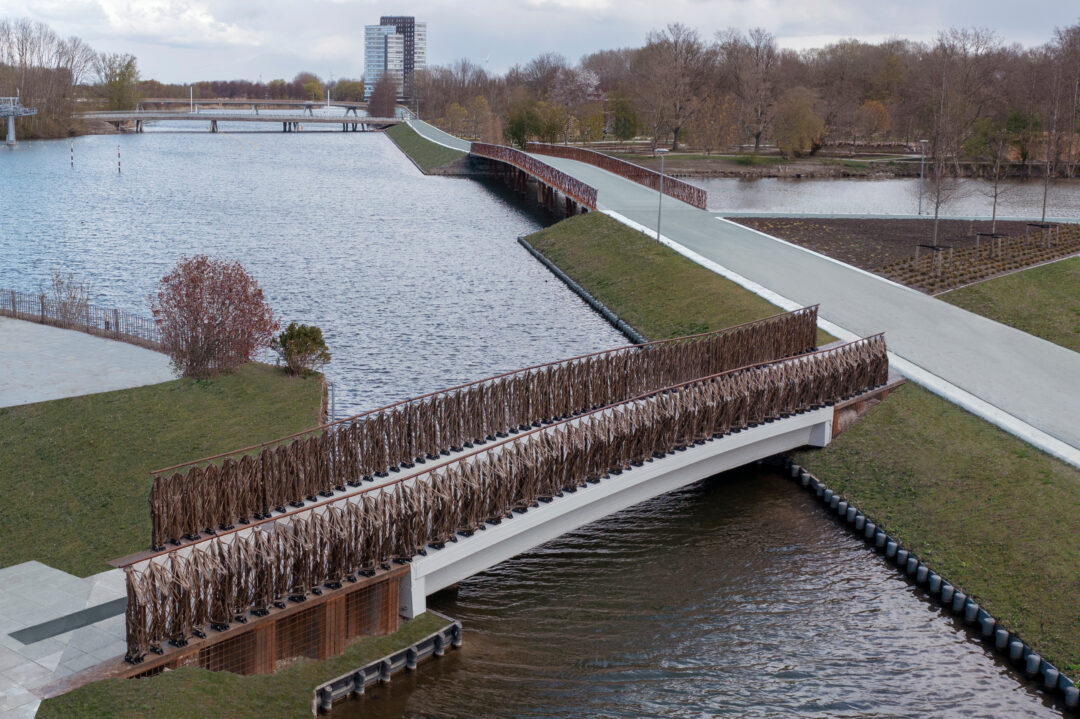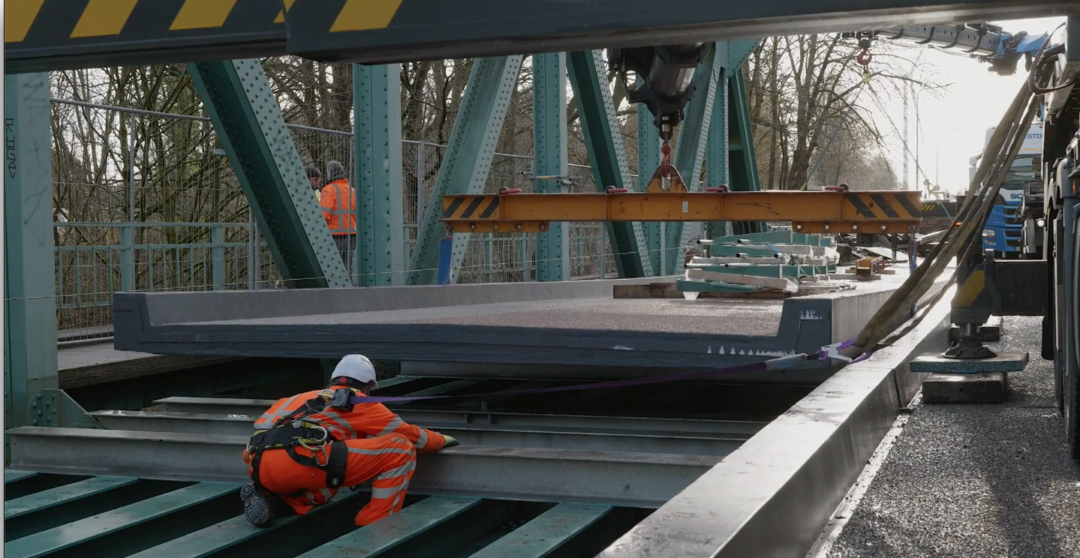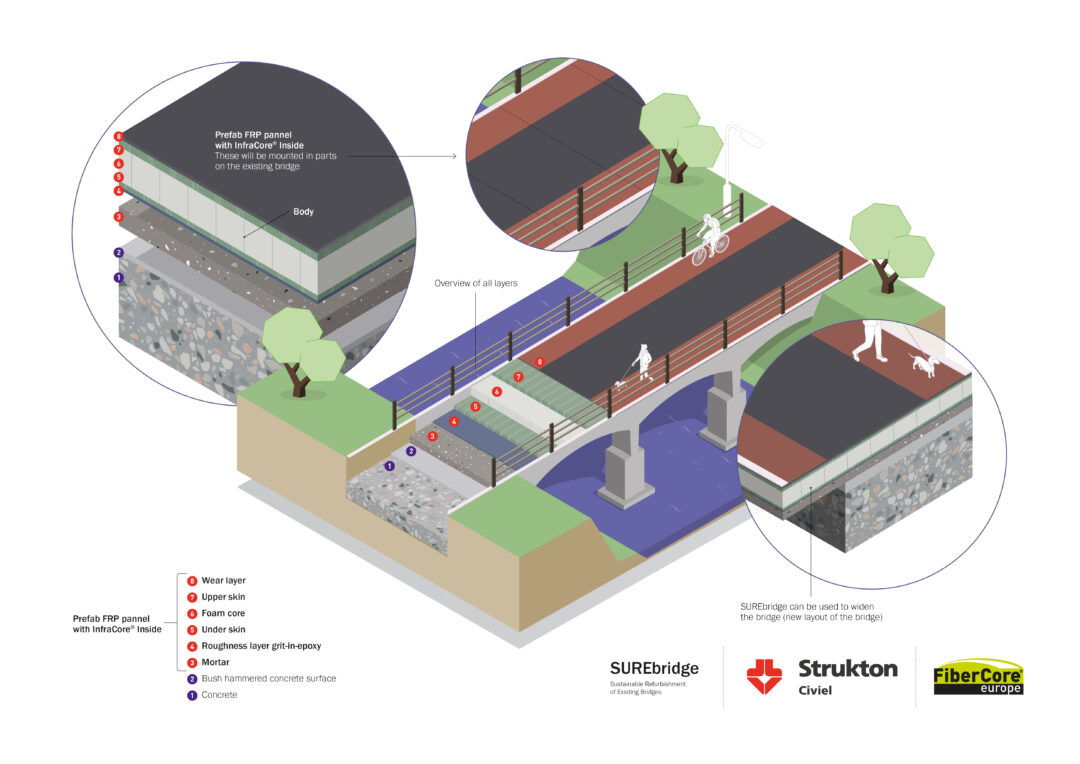An ancient material is being rediscovered: flax has been among us for thousands of years in the form of clothing, bags or sturdy ship ropes. Now these plant fibers are experiencing a renaissance and may become the building material of the future. Combined with a special bio-resin, they can be made into a light and very stable material with properties comparable to aluminum or light steel. The EU project "Smart Circular Bridge" shows what is already possible with this innovative new material: three bridges will be made with this biocomposite. The first one has already been built, and two more will follow.
In times of climate change and increasing scarcity of raw materials, biocomposites offer a great opportunity for the construction sector with its huge carbon footprint and high consumption of fossil resources. They offer great potential for a ":Biobased" circular economy, bearing in mind that flax, compared to wood, for example, is a fast-growing plant.
Interdisciplinary teams drive development
The first "Smart Circular Bridge" with a span of 15 meters has now been realized by an international consortium of 15 partners led by Eindhoven University of Technology. The project team includes five universities, seven innovative companies and three municipalities. The first bridge will now be opened on April 22 at Floriade, the international horticultural exhibition in Almere. In 2022 and 2023, two more "Smart Circular bridges" for pedestrians and cyclists will be realized the next in Ulm, Germany and then in Bergen op Zoom. With this intensive cooperation between science, industry and local governments, a multitude of innovations will be launched.
In addition to the 100% natural flax fibers, the resin will also come from non-fossil sources as much as possible. The proportion of bio-resin is currently still 25% for the first bridge, but it will increase to 60% or more for subsequent bridges. This will be achieved by using waste products from biodiesel production and recycled PET bottles.
Accelerating materials research with AI
Because biocomposites have great potential, research on the material is ongoing. The bridges are systematically monitored in real time. Nearly 100 sensors in the bridge provide data on the behavior of the material in daily use. How does the structure behave when 200 people walk across it at the same time? What happens in different seasons, during storms, hail and snow? How does the material age in detail?
The bridge management system, with optical fiber-optic sensors in the bridge provides information on material stretches and stresses. Acceleration sensors detect even the finest vibrations caused by gebruike or wind, for example. Evaluation is performed using artificial intelligence (AI) to recognize patterns in material behavior. The data can also be viewed by the public on a dashboard on a public website(dashboard.smartcircularbridge.eu). At the same time, engineers can use this data to refine their calculation and material models. Based on this, they will further develop the material and design models for the next bridges and possibly many other applications. Currently, teams are already researching columns and facade elements in biocomposite materials. Rotor blades of wind turbines are also conceivable.
Designing for the end of life today
With the circular economy in mind, the project is investigating what options there are for the building material after the bridges reach the end of their life in many decades. Three options are currently being further explored: mechanical, chemical and even biological recycling with fungi and/or bacteria. It is important that the use/life cycle of the material be as long as possible. To achieve this, end-of-life options must be considered from the beginning of projects.
The EU project "Smart Circular Bridge" shows much more than bridge building. It is a vivid example of how innovations for climate protection and circular economy can successfully get off the ground by also involving stakeholders. For bridges alone, it is worth considering alternative materials, as tens of thousands of them will have to be replaced in Europe in the coming years.
Statements
"These materials have a great future," is how project leader Professor Rijk Blok of TU Eindhoven describes the mood of optimism after halfway through the project. "Especially the intensive cooperation between science, industry and communities has given material development a big push."
"The current results make us optimistic: we expect to be able to build bridges with significantly larger spans and higher loads in the future," says Professor Dr. Patrick Teuffel of TU Eindhoven, the lead partner in the international Smart Circular Bridge consortium
Contact: PR
Proesler Kommunikation
Andre Jerke
Germany
+49 7071 23416
a.jerke@proesler.com
Expert contact:
Martijn Veltkamp
veltkamp@fibercore-europe.com




